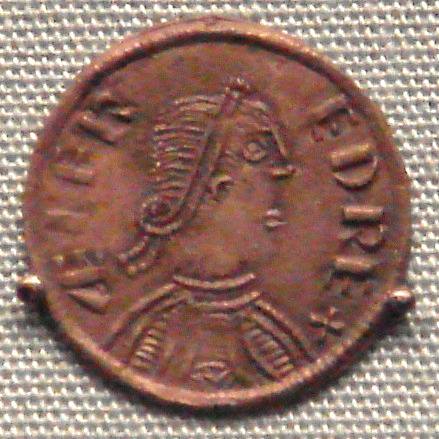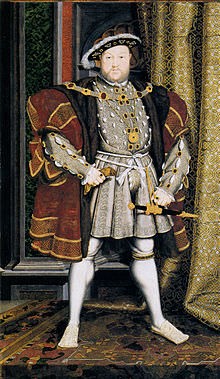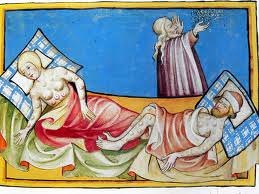Medieval Prostitution in Secular Law: The Sex Trade in Late Medieval London, Paris, and Toulouse
In order to understand the regulations that were put into place to deal with prostitutes and their trade in medieval England and France, it is important to have an understanding of what the legislators were trying to regulate. Who were these prostitutes? What acts constituted prostitution? What actions made a person a procurer, pimp, or bawd?
Westminster Abbey: A King’s Dream, A Nation’s Icon
Being a church with a decadent history of both art and monarchy, it is one of the most important and well known structures that exist in Europe. Resplendent as the Abbey appears today, one needs to understand its humble beginnings and development during the Middle Ages
Sex Differentials in Frailty in Medieval England
The sample used for this study comes from the East Smithfield Black Death cemetery in London. The benefit of using this cemetery is that most, if not all, individuals interred in East Smithfield died from the same cause within a very short period of time.
King Alfred, Mercia and London, 874-886: a reassessment
The creation of a new burh in London is seen as a natural development of the system of burhs which had been established by Alfred all over Wessex in the previous two years, following his victory over Guthrum’s forces at Edington
New book examines the medieval history of St Paul’s Cathedral
The past archaeological lives of the St Paul’s Cathedral site have been revealed in a new English Heritage book.
Miniature toys of medieval childhood
There is an immediate appeal in these early playthings – not least because many of them are strikingly similar to the toys that anyone over the age of about 35 today used to play with in their own childhood.
Defining a community: Controlling nuisance in late-medieval London
Looking only at late-medieval London, this study examines nuisance and social regulation through an analysis of secular court records, as well as other relevant municipal sources.
The Medieval Friaries of London
The five friaries under review are the houses that lasted up to the Dissolution in 1538: the Dominican Black Friars, the Franciscan Grey Friars, Carmelite White Friars, Augustinian Austin Friars and the house of Crossed or Crutched Friars
Age Patterns of Mortality During the Black Death in London, A.D. 1349-1350
This paper examines adult age-specific mortality patterns of one of the most devastating epidemics in recorded history, the Black Death of A.D. 1347-1351.
‘Sharper than swords, sturdier than stones’: space, language, and gender in fifteenth-century London
William and Isabel argued, quarreled, and fought most of the time, to the great weariness and nuisance of their neighbours…
The Battle of London 1066
The Battle of London 1066 By Peter Mills London Archaeologist, Vol.8:3 (1996) Introduction: By the end of Saturday 14th October 1066 William the…
Metropolitan comparisons: London as a city-state
Metropolitan comparisons: London as a city-state By Derek Keene Historical Research, Volume 77, Issue 198 (2004) Abstract: This article explores ideas associated with…
“Ye louely ladyes with youre longe fyngres”: the Silkwomen of Medieval London
“Ye louely ladyes with youre longe fyngres”: the Silkwomen of Medieval London By Stephanie Trigg Studia Anglica Posnaniensia, Vol.38 (2002) Abstract: The silkwomen…
Late Saxon Textiles from the City of London
Late Saxon Textiles from the City of London By Francis A. Pritchard Medieval Archaeology, Vol.28 (1984) Abstract: Archaeological investigations in the City of…
Crossing The River: Of Whores and Watermen
As a cultural perspective on the movements of local Londoners, this paper seeks to examine the nature of the River Thames as a boundary of propriety, behaviour, and acceptance in late-medieval and Tudor London
Abingdon and the Riots of 1327
Abingdon and the Riots of 1327 By Gabrielle Lambrick Oxoniensia, Vol. 29-30 (1964-1965) Introduction: It is well known that the political troubles of…
Medieval medical malpractice: the dicta and the dockets
have selected seven legal cases from the surviving documents of medieval London, ranging over the 150-year period from the mid-14th century through the late 15th.
The forgotten children of medieval London
Teenagers today may think they have it tough but adolescents in medieval London had a much harder life. In the early 1500s young…
Care of the Children: the Aldermen and the Orphans
Care of the Children: the Aldermen and the Orphans By Betty Masters Paper given at the Guildhall Historical Association (1997) Introduction: Several recent…
Water-related Infrastructure in Medieval London
Water-related Infrastructure in Medieval London By Roger D. Hansen Published Online (2004) Abstract: There were elements of London’s historic water and wastewater system…
The development of London by King Alfred: a reassessment
The development of London by King Alfred: a reassessment By Jeremy Haslam Transactions of the London and Middlesex Archaeological Society, Vol.61 (2010) Abstract:…
A Remarrying Widow: Law and Legal Records in Late Medieval London
A Remarrying Widow: Law and Legal Records in Late Medieval London By Shannon McSheffrey Worth and Repute: Valuing Gender in Late Medieval and…
Medieval building stone at the Tower of London
Although much has been written about the Tower of London and its buildings, the different types of building stone used have been largely ignored.
Shannon McSheffrey – I’ll Be Watching You: Can We Reconcile Privacy and Security?
Every Breath You Take Concordia University President Conference Series November 4, 2009 Professor Shannon McSheffrey of Concordia University discusses the historical and cultural…
Detective Fiction in the Archives: Court Records and the Uses of Law in Late Medieval England
How did late medieval Londoners make use of the legal and archival powers of governing authorities in order to negotiate their lives?





